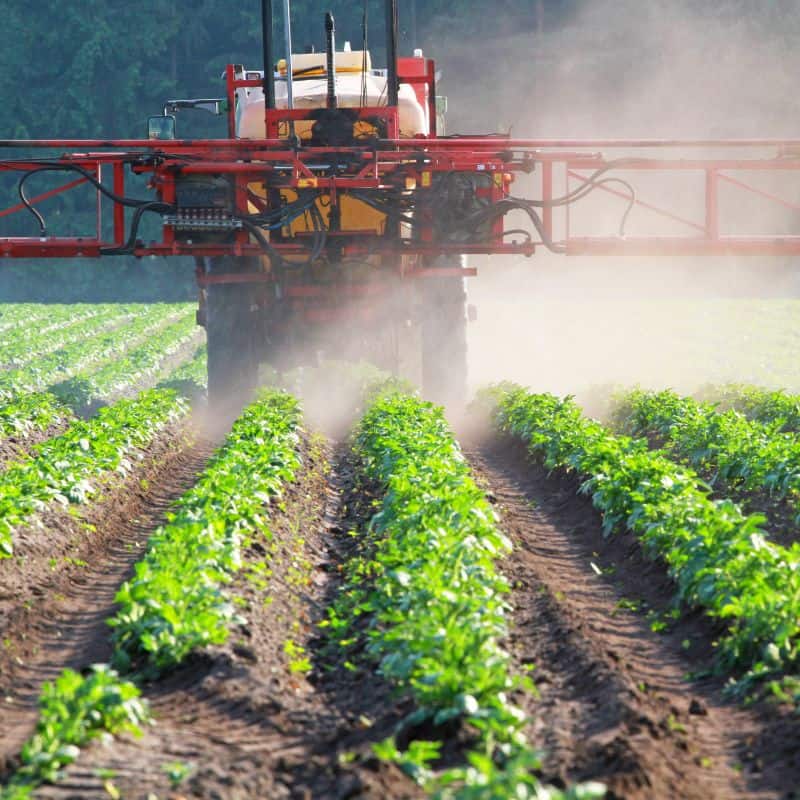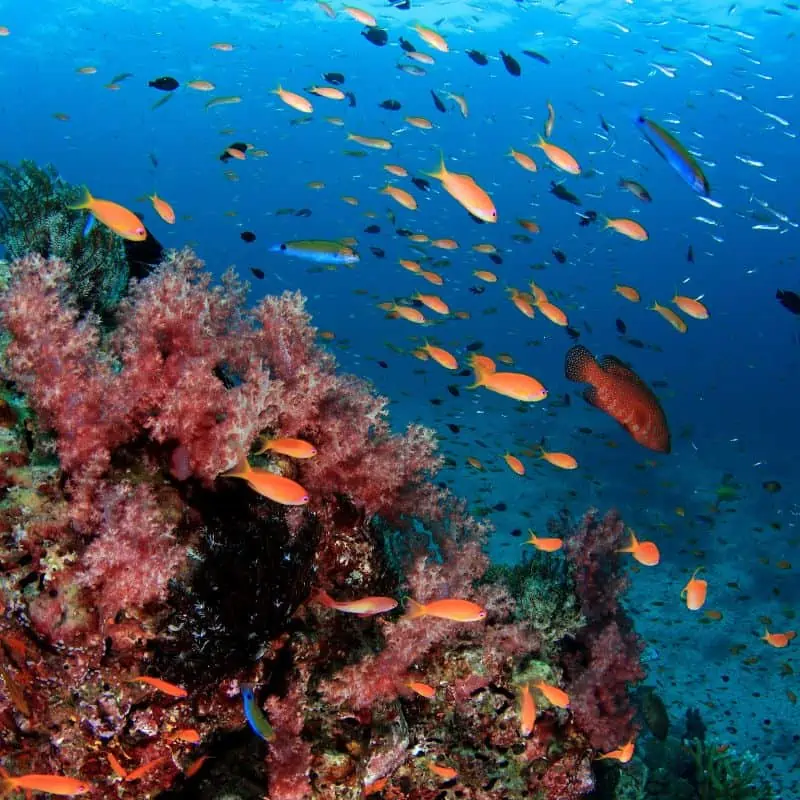In general, more species together provide far more stability than if there were fewer species. This was proven in a recent study. So, how does biodiversity affect the stability of an ecosystem?
All overall well-being is supported by biodiversity. In addition to providing food and clean water, biodiversity performs numerous other vital ecosystem services that are often invisible, like pollination, nitrogen cycling, drainage systems, and air filtration.
The provision of ecosystem services and the health of ecosystems are both dependent on biodiversity.
What matters, in this case, is that ecosystem services may be provided at large scales because of the stability that biodiversity itself, with all its numbers, compositions, relative abundances, and interactions, ensures.
Here’s an in-depth look at how biodiversity affects an ecosystem’s stability.
- How Does Biodiversity Affect An Ecosystem’s Stability?
- Biodiversity Stabilizes An Economy, So Tourism Thrives
- The Ecosystem Produces Raw Materials Due To Biodiversity
- Biodiversity Lowers Disease Transmission In Ecosystems
- Ecosystems Have Natural Pesticides Because Of Biodiversity
- Biodiversity Contributes To Microbes In The Ecosystem
- Pollinators In An Ecosystem Are A Result Of Biodiversity
- What Harms Biodiversity And An Ecosystem’s Stability?
- When Does Biodiversity Ruin A Ecosystem And Its Stability?
- Final Thoughts On Biodiversities Effects On The Ecosystem
How Does Biodiversity Affect An Ecosystem’s Stability?
Maintaining biodiversity is crucial for maintaining stable ecosystems. Natural systems are constantly subject to harm and stress. Such is life. However, diversity can increase the system’s resilience to damage without collapsing.
Interestingly, each species fills a particular ecological niche and serves a certain purpose in an ecosystem.
Rich biodiversity has various uses, including providing biological resources, environmental services, and social advantages. Biodiverse species support human life, employment, recreation, and tourism.
Yet, the more mankind exploits other animals and their environments; the more species are ultimately affected.
Rich in flora and fauna, biodiversity has an abundance of natural resources that can be used to further our lives.

Furthermore, it can produce food, natural building materials, and even components for pharmacological and medical purposes.
Abundant biodiversity also contributes to climate stability since plants readily absorb carbon dioxide and release oxygen.
Among the many functions of biodiversity in keeping an ecosystem stable are the production of organic material, provision of food, capture and storage of energy, degradation of organic materials, the cycling of water and nutrients in the soil, the control of soil erosion, the management of pests, the regulation of the climate, the addition of soil fertility, plant development, and most importantly, pollination of crops.
The preservation of biological diversity is essential for maintaining a stable climate, economy, and other essential ecosystem services.
All biotic things depend on one another to survive. Thus, eradicating one species could have a big impact on others.
Biodiversity Stabilizes An Economy, So Tourism Thrives
The possibility for the creation of items in the future increases with ecosystem diversity.
Biodiversity-rich areas offer a pleasant, alluring atmosphere and can encourage tourism.
As a result, it generates income, creates jobs, and eventually benefits people as a whole. The tourism sector is mostly driven by biodiversity.
Tropical forests, coastlines, nature reserves, and even metropolitan places rely on their natural features to draw tourists and keep them enchanted while they are there.
Due to widespread habitat and biodiversity degradation, useful species may go extinct before ever being discovered.
In the same way that the multibillion-dollar industries rely on biodiversity to develop and preserve the attractions visitors see, so does the outdoor tourism sector.
Ecotourism is a developing industry that aims to conserve while sustainably inviting tourists to the area.

The Ecosystem Produces Raw Materials Due To Biodiversity
We receive raw materials from biodiverse habitats, such as timber, biofuels, and botanical oils from farmed and feral species.
Plant-based materials have diverse qualities, such as tougher or softer wood or oils with various burning points.
An ecosystem’s stability, productivity, and ability to tolerate environmental stress all increase with its level of diversity.
Different wood species are prime examples of important species, mainly used for furniture construction.
Cutting down trees is an example of a direct economic benefit for immediate consumption as a source of wood for furniture or homes.
Biodiversity Lowers Disease Transmission In Ecosystems
Biodiversity is necessary for both pharmaceutically produced drugs and therapeutic plants.
Modern researchers are increasingly turning to natural biological resources for creating novel medications.
This inspiration is particularly pervasive in tropical rainforests, rich in biodiversity, and home to 50% of all known species.
Biodiversity is necessary for both manufactured medications and therapeutic plants.
Studies have shown a correlation between higher biodiversity and fewer cases of diseases, including acute respiratory infections, malaria, and diarrhea in humans.
Many marine organisms employ chemical defense systems, a rich source of novel and economically significant medications.
A diversified natural flora and fauna activity is essential for excellent agricultural output and human health.
Species produce advantages even if we don’t use them. A reduction in biodiversity can result in higher rates of disease transference to people and higher medical expenses.
Meanwhile, for commercial goals, medications made from plant or animal extraction are instances of economic value. Indirect economic value also exists.
Ecosystems Have Natural Pesticides Because Of Biodiversity
The annual global expenditure on pesticides per year is astronomical.
However, the degree of pest management provided by parasites and predators in ecological systems is 5–10x greater.
Therefore, it isn’t surprising that yield loss from infestations in farming and forestry would be devastating without parasites and predators.
Thus, the annual global expense of pesticides, insecticides, etc., would skyrocket. Using excessive pesticides will harm the environment, harming biodiversity.

Biodiversity Contributes To Microbes In The Ecosystem
Beneficial microbes are abundant in soil and easily overlooked while offering a variety of advantages.
Among other things, these microbes feed slightly larger species, support the movement of nutrients through the soil, increase the availability of nutrients to roots, and ensure that plant health is improved.
The preservation of biological diversity is essential for maintaining fertile soils.
Although microbes play a demonstrable role in maintaining soil health and contributing to crop performance, the biological component of soil is incredibly challenging to monitor and control.
Beneficial soil bacteria carry out essential tasks such as nitrogen cycling, decomposition of crop wastes, and promoting plant development.
Pollinators In An Ecosystem Are A Result Of Biodiversity
Ecological systems benefit significantly from pollinators.
Pollinators play a vital role in environmental and economic contributions. Pollination leads to increased food diversity and productivity. For example, pollinators are crucial when it comes to crops.
The honey bee is an adaptable, pervasive, and frequently utilized pollinator.
To produce fuel, fiber, and food, as well as the micronutrients necessary for human health, pollinator-dependent crops are being planted more and more.
However, relying solely on just one pollinator species globally is risky, especially considering the serious risks.
Studies show that other pollinators, such as flies, butterflies, and moths, are as vital, if not more so, for the development of various crops than bees.
Biodiversity is necessary for food production because it helps prevent and control diseases, pest management, nutritional supply, and pollination of food plants.
What Harms Biodiversity And An Ecosystem’s Stability?
A web of life is formed by the interdependence and interconnectedness of all species of animals and plants alike.
Through these links, the planet becomes more biologically diverse and capable of fending off threats like diseases and wildfires.
But when these links are broken, biodiversity declines and human health, well-being, survival, and the ecosystem are threatened.
Such disturbances include population expansion, the continuous use of chemical pest controls, unsustainable farming and horticulture, and global warming.
More and more wildlife and animals are becoming extinct, decreasing biodiversity.

The biodiversity of the globe is impacted by humans in various ways, both consciously and unconsciously.
The way humans have altered natural ecosystems to make space for farms or collect natural resources has posed the greatest harm to biodiversity. Still, as climate change intensifies, it will have a rising effect on ecosystems.
Changes in land use, particularly for large-scale food production, are the primary culprit of biodiversity loss, accounting for approximately 30% of biodiversity drop globally.
The second major factor, accounting for 20%, is habitat destruction.
This is overhunting animals, overfishing, and overharvesting goods, including food, medication, and wood.
In addition to pollution, global warming is the third largest direct cause of biodiversity loss, accounting for 14% of the problem.
11% are foreign species that have become invasive. It seems like humans are caught between a rock and a hard place.
The global food supply is in danger due to biodiversity loss, mainly caused by agricultural growth.
Nonetheless, there is a growing need for more area to be cultivated due to the world’s expanding population.
One of the main causes of the loss of biodiversity is agriculture. Changes in land usage and unsuitable management techniques, such as excessive soil consumption and dependence on chemicals such as pesticides, are of particular concern.
Thanks to new technologies, the agricultural sector might use fewer harmful pesticides while also using land more effectively.
But there is no guarantee this will be sufficient to repair the harm done to the environment.
Biodiversity can be safeguarded in several ways, including using fewer pesticides in agriculture, altering your consumption patterns, and persuasively lobbying for change to the appropriate parties.
When Does Biodiversity Ruin A Ecosystem And Its Stability?
The consensus is that ecosystems with diverse species are more resilient to natural disturbances like pesticides, drought, and heat periods.
However, ecologists have found that the issue is not as straightforward as it first appears.
Increased biodiversity may make an ecosystem increasingly unstable under specific environmental circumstances.
Other scientists observe the opposite relationship between biodiversity and stability in ecosystems like grassland or algal communities.
According to research studies in aquatic ecology, the findings make it obvious that even more species alone are not enough to assure the stability of an entire ecosystem.
Species themselves must be capable of reacting to environmental shifts in various ways and species diversity.
Final Thoughts On Biodiversities Effects On The Ecosystem
As can be seen, biodiversity is crucial to an ecosystem’s stability.
It plays a role in a wide range of food plants, pollination of crops, nutrient provision, insect control, genetic diversity, and disease prevention and management.
This goes to show that food production depends heavily on biodiversity.
However, it is not only food that depends on biodiversity but medicine, tourism, soil fertility, nutrient richness, and natural pesticides.
Furthermore, biodiversity can be harmed, resulting in an unstable ecosystem.
As much as biodiversity is beneficial, it can also be detrimental to an ecosystem, which will, in turn, harm the ecosystem’s stability in the long run.
